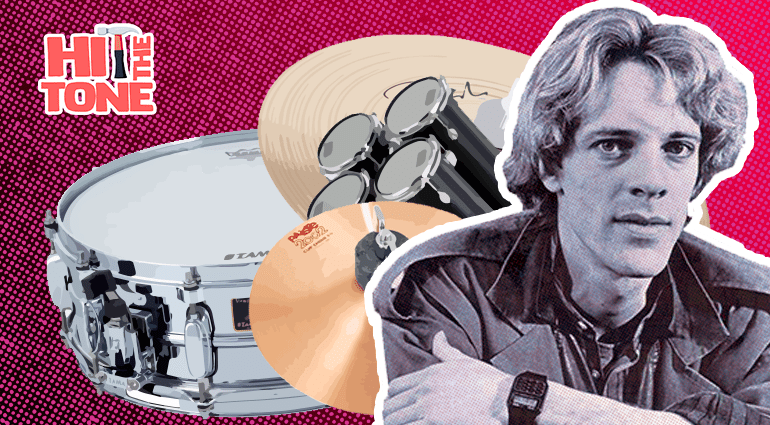
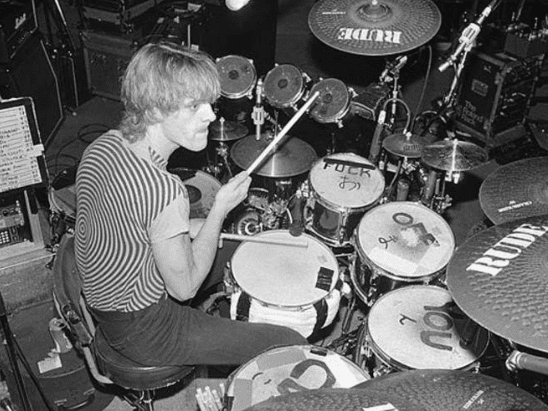
Few musicians raise such a unanimous agreement as Stewart Copeland. And it’s easy to check, just ask two drummers to practice diametrically opposite genres: both will breathe in deeply when the name of the drummer of The Police is mentioned. In the trio that he formed with Andy Summers and Sting, the one from Virginia redefined pop drumming. He did it by contributing influences of reggae and jazz, using different drum structures (he brought in the octobans and used a cymbal for children) and betting on syncopated rhythms (a hi-hat never before had so much prominence). In this article we will take the scalpel to “the Copeland sound” and leave you a series of tricks so that you, young Padawan, can become the next queen or king of pop drumming.
The importance of going against the grain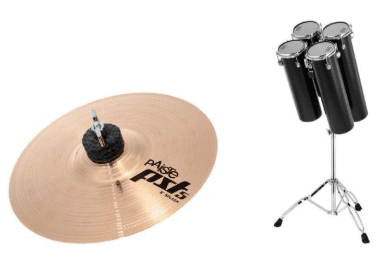
At a time when producers were trying to make the drums sound as big as possible and musicians were starting to use 14 ”and 16” floor toms as rack toms, Stewart Copeland was going in the opposite direction: he sought to achieve volume and projection through smaller, tighter drums and higher-pitched, “faster” cymbals. How did he achieve it? It was not that difficult: a 13” hi-hat and what Tama greatly contributed in 1978: the octobans. In case someone here doesn’t know: the octobans are tubular-bodied toms that were originally grouped together in fine-tuned series of eight notes, hence their name. They normally have a diameter of 15 cm (6″) and their lengths range from 280 mm (11”) to 600 mm (23.5”). This difference in tube length is what gives each unit its characteristic tone. But, anyway, Copeland himself explains it to you in detail here:
You are currently viewing a placeholder content from Youtube. To access the actual content, click the button below. Please note that doing so will share data with third-party providers.
The American also contributed a lot in the use of the splash, usually 6 and 8 inches. In fact, it is considered one of its greatest historical supporters. Through a toy saucer, he helped Paiste to develop his first version of a modern splash. An example of the prominence of octoban and splash in The Police? Sure, here it goes:
You are currently viewing a placeholder content from Youtube. To access the actual content, click the button below. Please note that doing so will share data with third-party providers.
Show me the setup, please!
It is often said that there are two types of drummers, those who choose to have a large number of drums around and those who prefer to select their set accurately to emphasise their natural abilities. Stewart Copeland, who used virtually the same set for all 5 of The Police’s albums, is an example of the latter.
Let’s talk about his snare, for example, a 14 x 5″ Tama in chrome over brass with a 1.5 mm casing, accompanied by a 22 x 18″ bass drum, toms of 10″ and 12 x 8″ and 13 x 9″, toms of 16″ and 18 x 16″, in addition to the aforementioned octoban. But in the early days, before becoming completely hooked on Tama, Copeland kept the Police in time with a Pearl Jupiter 14 x 5″ snare.
And if we talk about cymbals, we have to talk, especially, about hi-hats.
You are currently viewing a placeholder content from Youtube. To access the actual content, click the button below. Please note that doing so will share data with third-party providers.
Do you hear that? Do you notice that the “singing voice” of the percussion is displaced from the snare drum? That’s right. In a lot of The Police’s songs it seems that the central part of the percussion is the hi-hat. With a 12″ model, Copeland developed, through very accurate attacks, the basis of what would be a sound far removed from what had been seen so far. A quick review of the rest of the cymbals: 12″ splash and 14″, a 6″ cup chime, 16″ crash, 17″ and 18″, 18″ rides and 22″, this developed hand in hand with Paiste, by the way, and 8″ splash and 10″.
You might be wondering what this review of each piece of the Copeland kit is all about. The curiosity is that, while the production and sound changed as The Police developed their career, from the dry, up-close sound of Zenyatta Mondatta (1980, A&M Records) to the crunch of Synchronicity (1983, A&M Records), the drum set remained basically the same!
Okay, now tell me: how do I play like Stewart Copeland?
All right, to get down to the nitty-gritty of it we’re gonna need to be clear about a few things:
Stewart Copeland is considered one of the most influential musicians in the pop world. What does this mean? Well, that he draws from jazz, Lebanese music, reggae and adds it to his own language. That is one of the keys of his inimitable style: nobody would say that The Police played tangos, but there is, for example, Roxanne. If you dig, you will notice those metrics, that groove.
You are currently viewing a placeholder content from Youtube. To access the actual content, click the button below. Please note that doing so will share data with third-party providers.
Watch out for accents: another one of Copeland’s big secrets. Sometimes he distributed them in a very regular and almost symmetrical way, as in the case of Don’t Stand So Close to Me, but other times he placed them in a random and spontaneous way, which gave the song freshness and impulse. Take, for example, Demolition Man, where he mixes the rhythm of the hi-hat with random accents on the ride and the song suddenly becomes something else. It’s better if you understand where I’m coming from. This detail, which on any other drummer would be disjointed and chaotic, in Copeland, due to his superb sense of rhythm, is as natural as breathing.
Always surprising: the first beat of every Copeland drum line always surprises the listener. Non-obvious rhythms (an accentuated hi-tom, an eternal silence to enter the second beat) that placed in this part of each stanza change the song. Once you pay attention and add subtlety to the beginnings of your phrases, the Copeland Sound will be closer.
Break the metrics. Listen to this drum kit, for goodness’ sake. Can you feel it? Copeland strengthened his style through the use of syncopation (he is considered one of the greatest in this rhythmic art), but there was something else: an impressive mastery of mixing beats. In this case, 6/8 and 3/4. It may sound like quantum physics to you right now, but try to experiment.
Watch your right foot. Take a look at this chorus and you’ll notice how his right foot is totally independent of his right hand, especially during the grooviest part: the cymbal accents appear in counterpoint with the bass drum pattern. Another detail to take into account.
Use technology always at the service of the song. In a moment of Walking on the Moon, to give a sensation of weightlessness, the left-handed drummer as a right-handed man disrupts the drums at the beginning, which provide a kind of earthly contact. He either eliminates them or shifts them from beats 1 and 3 to beats 2 and 4. In addition, the American applied a gentle delay to the snare and the hi-hat. When many used technology to make up for their shortcomings, Copeland was already walking on the moon 😉
You are currently viewing a placeholder content from Youtube. To access the actual content, click the button below. Please note that doing so will share data with third-party providers.
Let’s talk about drumsticks

Before finishing, one last thing. Yes: the drumsticks. Copeland, along with Vater, developed a 16″ American walnut stick with an oval head, which provides a clear and articulated hit. But what is more important: the technique. There is a recurring conversation between drummers: matched grip or traditional grip? The latter technique consists of taking the right drumstick with the thumb and index finger and the left one in the gap between the thumb and index finger and passing it between the ring and middle fingers. The modern grip, on the other hand, is supposed to seek a more even sound between the two hands (although this can also be achieved with the traditional grip), and consists of holding the two sticks with the thumb and index finger and embracing the wood with the rest of the fingers.
 Copeland is clear about this: “I prefer the traditional grip. My theory is that the thumb is a stronger finger than the index finger. And the pressure is applied to the stick more directly with the thumb than with the combination of fingers used in the combo grip. However, in many videos you can see Copeland doing variations of the classic grip and placing the left stick between his middle and index fingers. Anyway, this guy always has to do it his own way.
Copeland is clear about this: “I prefer the traditional grip. My theory is that the thumb is a stronger finger than the index finger. And the pressure is applied to the stick more directly with the thumb than with the combination of fingers used in the combo grip. However, in many videos you can see Copeland doing variations of the classic grip and placing the left stick between his middle and index fingers. Anyway, this guy always has to do it his own way.
https://www.youtube.com/watch?v=EESQBJjhfUo
Article originally written by Santini Rose in Spanish
6 comments
Leave a Reply
You are currently viewing a placeholder content from Facebook. To access the actual content, click the button below. Please note that doing so will share data with third-party providers.
More InformationYou are currently viewing a placeholder content from Instagram. To access the actual content, click the button below. Please note that doing so will share data with third-party providers.
More InformationYou are currently viewing a placeholder content from X. To access the actual content, click the button below. Please note that doing so will share data with third-party providers.
More Information
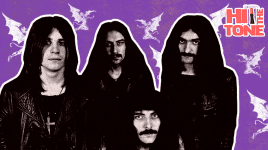
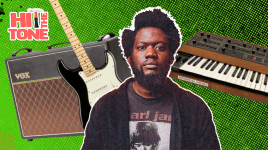
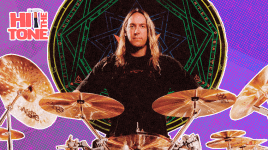
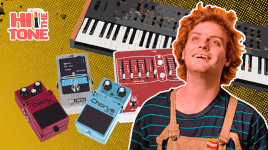
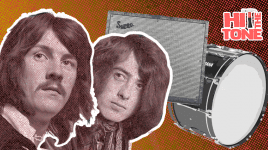
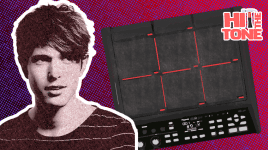
John Buxton says:
GOOD article. Detail without over-complication.
Jack Irving says:
Excellent article indeed. Stewart Copeland is a good and innovative drummer.
DouglasM says:
Great breakdown. As a self-taught drummer Stew was my
Idol. I too broke all the rules of being a traditional drummer behind a traditional drum set. I hope the up and coming kids lock on and study Stewart!
Jeff says:
Not a big deal…but you got his snare use all backwards. He used a Tama ‘Kingbeat’ snare for all the early Police recordings….with a Medium blue metallic Tama Imperialstar kit….somewhere mid-career with The Police he got the COB Pearl Snare with a ‘Gladstone’ type throw….not a ‘Jupiter’ as everyone thinks(same family I suppose)…that snare was used for sure on Ghost in The Machine and Synchronicity. Along with a ‘Midnight Blue’ and black Tama Imperialstar kits.. not sure what order ….
Wendell F says:
Kinda shocking every time I see him at a kit surrounded by Rudes. It takes a deft hand to get any kind of nuance out of those things.
Alesa Evon says:
Dgme employee login Portal employee can access them my pay & info, payment schedule, attendance, payroll reports, login and check benefits through dolgeneraldgme com portal.